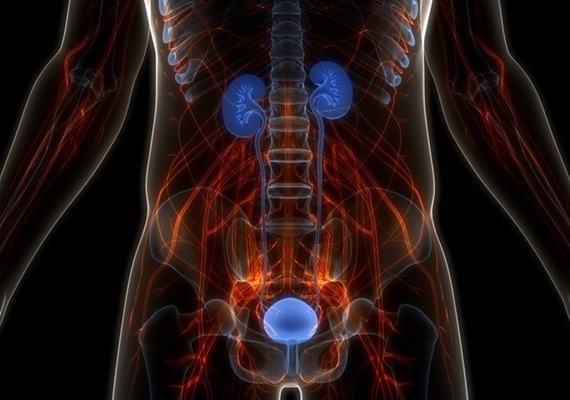Innovative, Label-Free Ratiometric Fluorosensor Enables More Sensitive Viral RNA Detection
|
By LabMedica International staff writers Posted on 08 Apr 2025 |

Viruses present a major global health risk, as demonstrated by recent pandemics, making early detection and identification essential for preventing new outbreaks. While traditional detection methods are effective, they often lack the ability to provide spatiotemporal data on the release of viral genome material. In a significant breakthrough, researchers have developed a novel, label-free ratiometric fluorosensor that selectively and sensitively detects enteroviral RNA. This advancement paves the way for even more efficient detection methods and highlights the importance of interdisciplinary collaboration in addressing global health challenges.
Fluorescent nanoparticles have become powerful tools in bioanalyte sensing, with carbon dots (CDs) leading the charge due to their ease of synthesis, remarkable photostability, tunable photoluminescence, excellent solubility in water, biocompatibility, and versatile surface functionalities for ligand conjugation. These properties make CDs a transformative force in biosensing. At the Nanoscience Center (NSC) at the University of Jyväskylä (Jyväskylä, Finland), researchers have developed an enhanced ratiometric fluorosensor by functionalizing CDs with a Probe (a single-stranded complementary oligonucleotide fragment) and ethidium bromide (EB) for detecting enteroviral RNA. This effort, combining expertise in biology, chemistry, and physics, represents a significant advancement in viral detection technology.
The newly developed Functionalized Sensor (Func Sensor), where the CDs are covalently bonded with the probe, outperforms the traditional Non-Functionalized Sensor (Non-Func Sensor), which is a simple mix of CDs, the probe, and EB. In both sensor types, the target DNA enhances EB fluorescence upon hybridizing with the probe, while the CDs' fluorescence changes slightly due to electron transfer, enabling ratiometric detection. The Non-Func Sensor showed lower sensitivity to target DNA and was ineffective with actual enteroviral RNA samples. In contrast, the Func Sensor demonstrated much higher sensitivity to both DNA and real viral RNA, showing improved selectivity. The improved performance of the Func Sensor is attributed to enhanced charge transfer facilitated by the covalent functionalization of the CDs.
The proof-of-principle study, published in CARBON, emphasizes the significance of covalently immobilizing the probe to improve electron transfer between the CDs and EB, thereby enhancing performance. This research also demonstrates the Func Sensor’s suitability for practical applications in rapid, real-time, and precise in situ detection of viral RNA. Specifically, the study shows that the Func Sensor can detect enteroviral RNA release from the capsid in real time in vitro. This capability positions the Func Sensor as a novel platform for detecting viral RNA during infection, offering a critical advancement in real-time viral RNA detection. The team’s pioneering work not only provides a new method for viral RNA detection but also contributes valuable insights into charge transfer mechanisms between fluorophores. Building on this success, the team is now working to improve the system’s robustness by replacing the potentially harmful ethidium bromide with safer, less cytotoxic, or biocompatible dyes, further enhancing the safety and effectiveness of in vivo viral RNA detection.
Related Links:
University of Jyväskylä
Latest Technology News
- Pain-On-A-Chip Microfluidic Device Determines Types of Chronic Pain from Blood Samples
- Smartphones Could Diagnose Diseases Using Infrared Scans
- Novel Sensor Technology to Enable Early Diagnoses of Metabolic and Cardiovascular Disorders
- 3D Printing Breakthrough Enables Large Scale Development of Tiny Microfluidic Devices
- POC Paper-Based Sensor Platform to Transform Cardiac Diagnostics
- Study Explores Impact of POC Testing on Future of Diagnostics
- Low-Cost, Fast Response Sensor Enables Early and Accurate Detection of Lung Cancer
- Nanotechnology For Cervical Cancer Diagnosis Could Replace Invasive Pap Smears
- Lab-On-Chip Platform to Expedite Cancer Diagnoses
- Biosensing Platform Simultaneously Detects Vitamin C and SARS-CoV-2
- New Lens Method Analyzes Tears for Early Disease Detection
- FET-Based Sensors Pave Way for Portable Diagnostic Devices Capable of Detecting Multiple Diseases
- Paper-Based Biosensor System to Detect Glucose Using Sweat Could Revolutionize Diabetes Management
- First AI-Powered Blood Test Identifies Patients in Earliest Stage of Breast Cancer
- Optical Biosensor Rapidly Detects Monkeypox Virus at Point of Care
- Nanomaterial-Based Diagnostic Technology Accurately Monitors Drug Therapy in Epilepsy Patients
Channels
Clinical Chemistry
view channel
New Method Uses Pulsed Infrared Light to Find Cancer's 'Fingerprints' In Blood Plasma
Cancer diagnoses have traditionally relied on invasive or time-consuming procedures like tissue biopsies. Now, new research published in ACS Central Science introduces a method that utilizes pulsed infrared... Read more
Carbon Nanotubes Help Build Highly Accurate Sensors for Continuous Health Monitoring
Current sensors can measure various health indicators, such as blood glucose levels, in the body. However, there is a need to develop more accurate and sensitive sensor materials that can detect lower... Read moreMolecular Diagnostics
view channel
Blood Test for Early Alzheimer's Detection Achieves Over 90% Accuracy
Alzheimer's disease (AD) is a debilitating condition and a leading cause of disability and death worldwide. The availability of reliable diagnostic tools is currently restricted, and diagnosis often relies... Read more
RNA-Based Blood Test Detects Preeclampsia Risk Months Before Symptoms
Preeclampsia remains a major cause of maternal morbidity and mortality, as well as preterm births. Despite current guidelines that aim to identify pregnant women at increased risk of preeclampsia using... Read more
First Of Its Kind Test Uses microRNAs to Predict Toxicity from Cancer Therapy
Many men with early-stage prostate cancer receive stereotactic body radiotherapy (SBRT), a highly precise form of radiation treatment that is completed in just five sessions. Compared to traditional radiation,... Read moreNovel Cell-Based Assay Provides Sensitive and Specific Autoantibody Detection in Demyelination
Anti-myelin-associated glycoprotein (MAG) antibodies serve as markers for an autoimmune demyelinating disorder that affects the peripheral nervous system, leading to sensory impairment. Anti-MAG-IgM antibodies... Read moreHematology
view channel
New Scoring System Predicts Risk of Developing Cancer from Common Blood Disorder
Clonal cytopenia of undetermined significance (CCUS) is a blood disorder commonly found in older adults, characterized by mutations in blood cells and a low blood count, but without any obvious cause or... Read more
Non-Invasive Prenatal Test for Fetal RhD Status Demonstrates 100% Accuracy
In the United States, approximately 15% of pregnant individuals are RhD-negative. However, in about 40% of these cases, the fetus is also RhD-negative, making the administration of RhoGAM unnecessary.... Read moreImmunology
view channel
Stem Cell Test Predicts Treatment Outcome for Patients with Platinum-Resistant Ovarian Cancer
Epithelial ovarian cancer frequently responds to chemotherapy initially, but eventually, the tumor develops resistance to the therapy, leading to regrowth. This resistance is partially due to the activation... Read more
Machine Learning-Enabled Blood Test Predicts Immunotherapy Response in Lymphoma Patients
Chimeric antigen receptor (CAR) T-cell therapy has emerged as one of the most promising recent developments in the treatment of blood cancers. However, over half of non-Hodgkin lymphoma (NHL) patients... Read moreMicrobiology
view channel
Handheld Device Delivers Low-Cost TB Results in Less Than One Hour
Tuberculosis (TB) remains the deadliest infectious disease globally, affecting an estimated 10 million people annually. In 2021, about 4.2 million TB cases went undiagnosed or unreported, mainly due to... Read more
New AI-Based Method Improves Diagnosis of Drug-Resistant Infections
Drug-resistant infections, particularly those caused by deadly bacteria like tuberculosis and staphylococcus, are rapidly emerging as a global health emergency. These infections are more difficult to treat,... Read more
Breakthrough Diagnostic Technology Identifies Bacterial Infections with Almost 100% Accuracy within Three Hours
Rapid and precise identification of pathogenic microbes in patient samples is essential for the effective treatment of acute infectious diseases, such as sepsis. The fluorescence in situ hybridization... Read morePathology
view channel
Novel Technique Uses ‘Sugar’ Signatures to Identify and Classify Pancreatic Cancer Cell Subtypes
Pancreatic cancer is often asymptomatic in its early stages, making it difficult to detect until it has progressed. Consequently, only 15% of pancreatic cancers are diagnosed early enough to allow for... Read more
Advanced Imaging Reveals Mechanisms Causing Autoimmune Disease
Myasthenia gravis, an autoimmune disease, leads to muscle weakness that can affect a range of muscles, including those needed for basic actions like blinking, smiling, or moving. Researchers have long... Read moreIndustry
view channel
Cepheid and Oxford Nanopore Technologies Partner on Advancing Automated Sequencing-Based Solutions
Cepheid (Sunnyvale, CA, USA), a leading molecular diagnostics company, and Oxford Nanopore Technologies (Oxford, UK), the company behind a new generation of sequencing-based molecular analysis technologies,... Read more
Grifols and Tecan’s IBL Collaborate on Advanced Biomarker Panels
Grifols (Barcelona, Spain), one of the world’s leading producers of plasma-derived medicines and innovative diagnostic solutions, is expanding its offer in clinical diagnostics through a strategic partnership... Read more





















